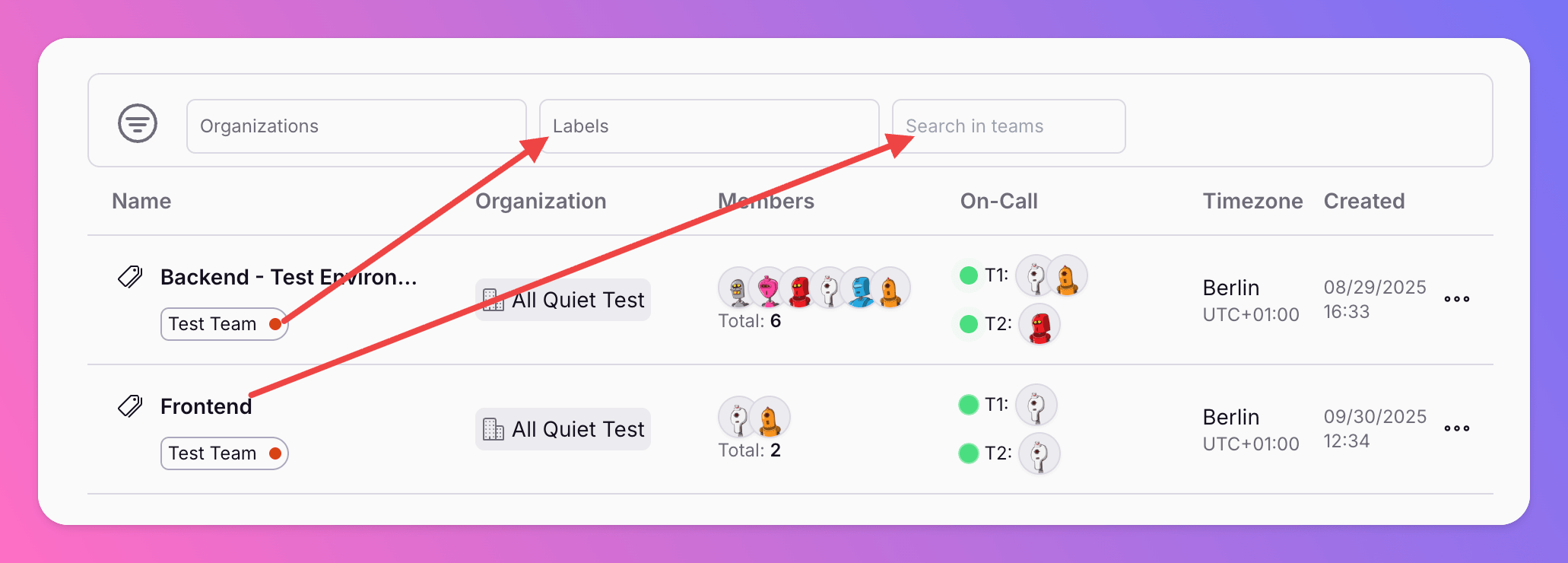- Each user can be a member of multiple teams.
- Each integration belongs to exactly one team.
- Each incident triggered by an integration is thus available for collaboration only to the members of the integration’s team.
Create a team
Only Billable Users can create a new team.
This documentation explains team creation without an Organization. Check out our doc for Organizations to learn more about the team creation within an Organization.
This documentation explains team creation without an Organization. Check out our doc for Organizations to learn more about the team creation within an Organization.
1
Step 1
Under 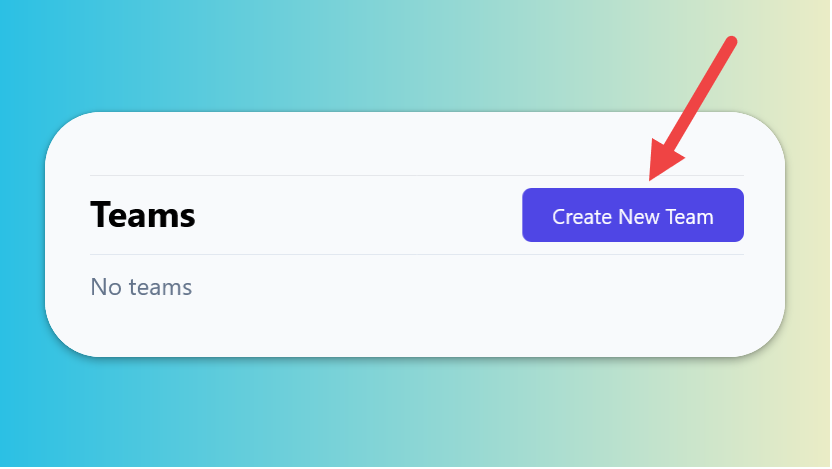
Teams click Create Team.
2
Step 2
- Enter a
Diplay Namefor your team. - Optionally, you can enter a timezone. If omitted, your team’s timzone will default to UTC.
- For Pro and Enterprise plans: Select the Organization you want to add the team to, or select “No organization”.
- Decide if you want to be included in the standard escalation policy.
- Optionally, you can add
Labels. This is handy if you want to organizae your teams into categories, e.g. departments or business units. You can use the labels to filter incidents, integrations and your team overview. - Hit
Create. You can later change these settings.
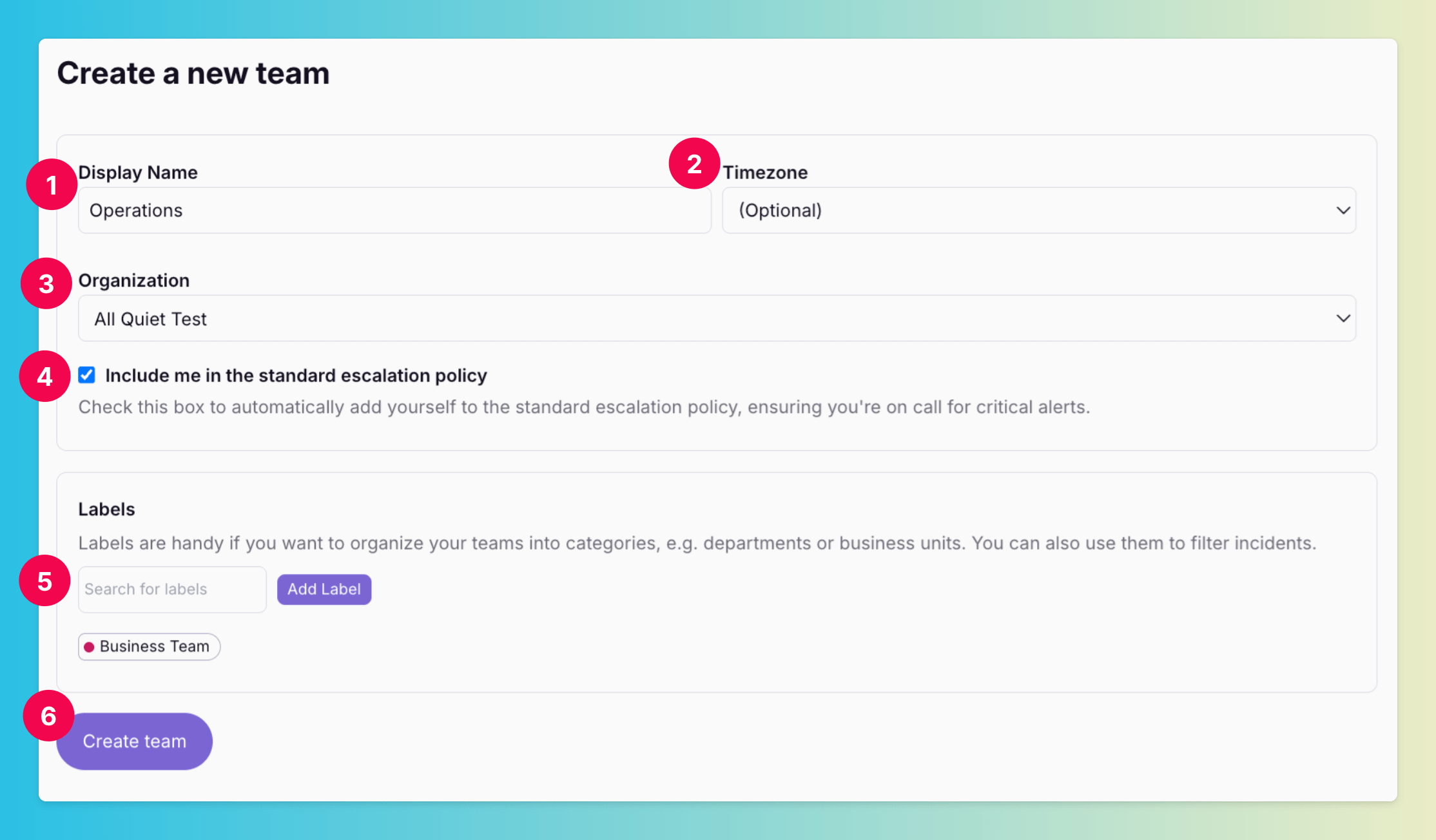

Edit Team
- In the
Edittab, you can configure the general settings for your team. - This includes your team’s
Display Name - Adjust your team’s
Timezone. The timezone is used for your teams calendar, schedules and escalations. Per default, it’s UTC. - For Pro and Enterprise plans: Select the Organization you want to add the team to, or select “No organization”.
- You can add or remove
Labels. This is handy if you want to organizae your teams into categories, e.g. departments or business units. You can use the labels to filter incidents, integrations and your team overview. - Schedule delivery of your team’ weekly Engagement Report.
- You can edit the billable user of your team. If your team is part of an organization, this field will not be available, as the team will be billed through the organization’s billable user.
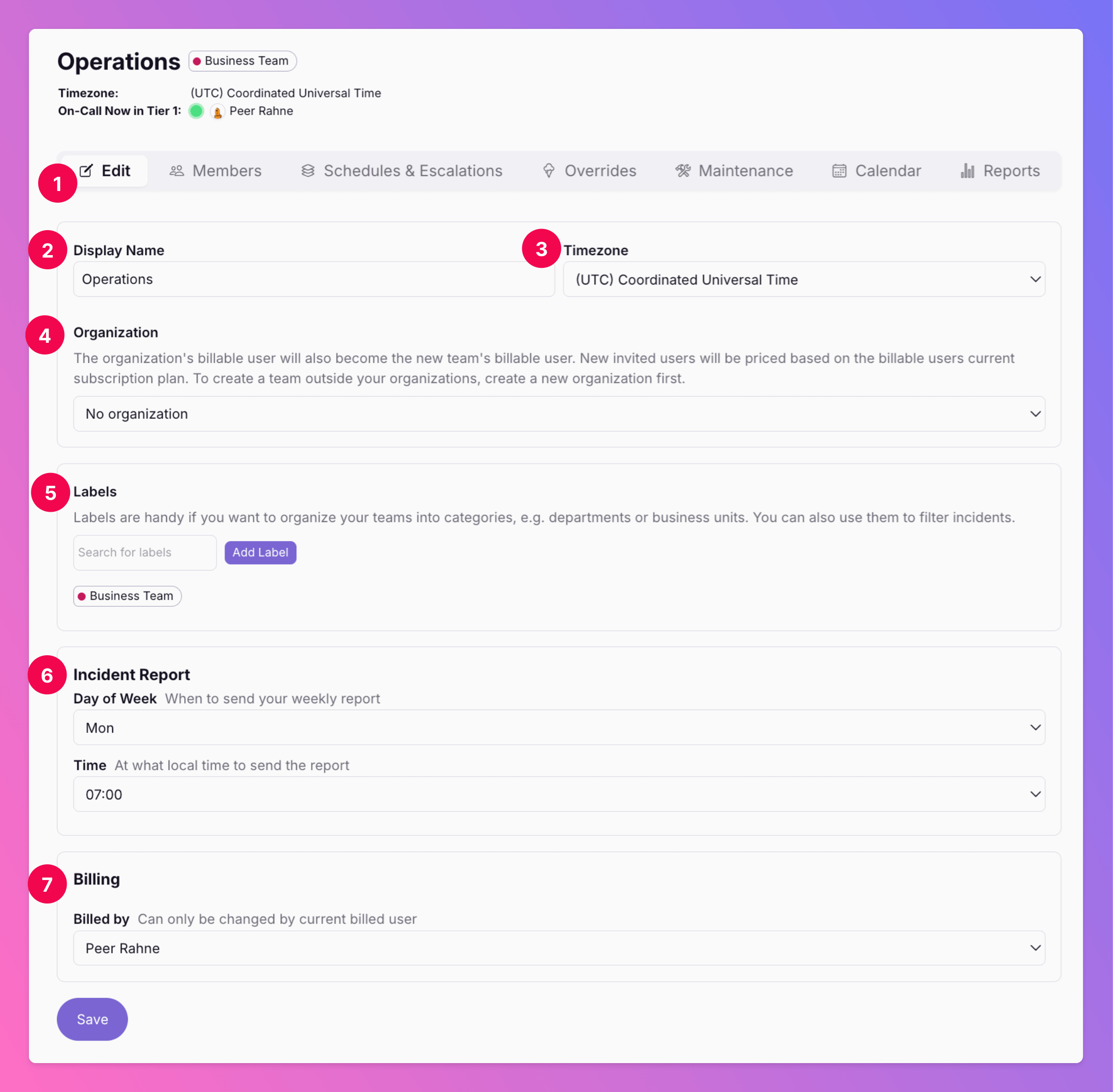
Members
Roles
A user has one of the following roles within a team:Member: A member can collaborate on all incidents, view the team calendar, get an engagement report and create their own personal overrides.Administrator: An admin can additionally set up the escalation schedules, create overrides for the whole team and create and manage all of the team’s integrations plus the respective advanced routing in the team. Also, they can manage the team’s users.
Inviting Members
After setting up your team, you’re instantly assigned theAdministrator role and become the primary account holder for billing purposes. Refer to our Billing section for more details.
Inviting colleagues is straightforward:
- Simply send them an invite via email.
- They’ll need to sign up and accept your invitation to collaborate.
1
Step 1
Navigate to the 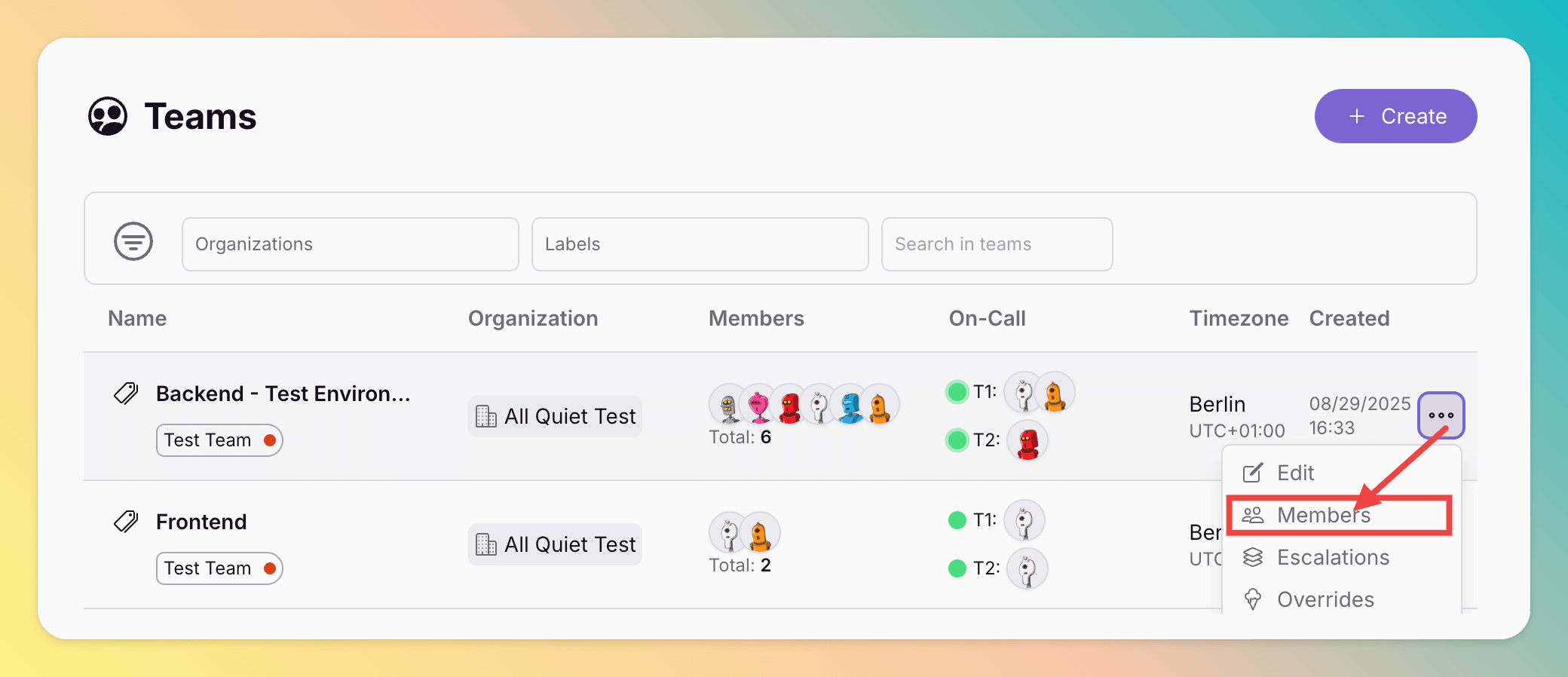
Members section within your team settings.
2
Step 2
Enter the email addresses of colleagues you wish to invite, then click 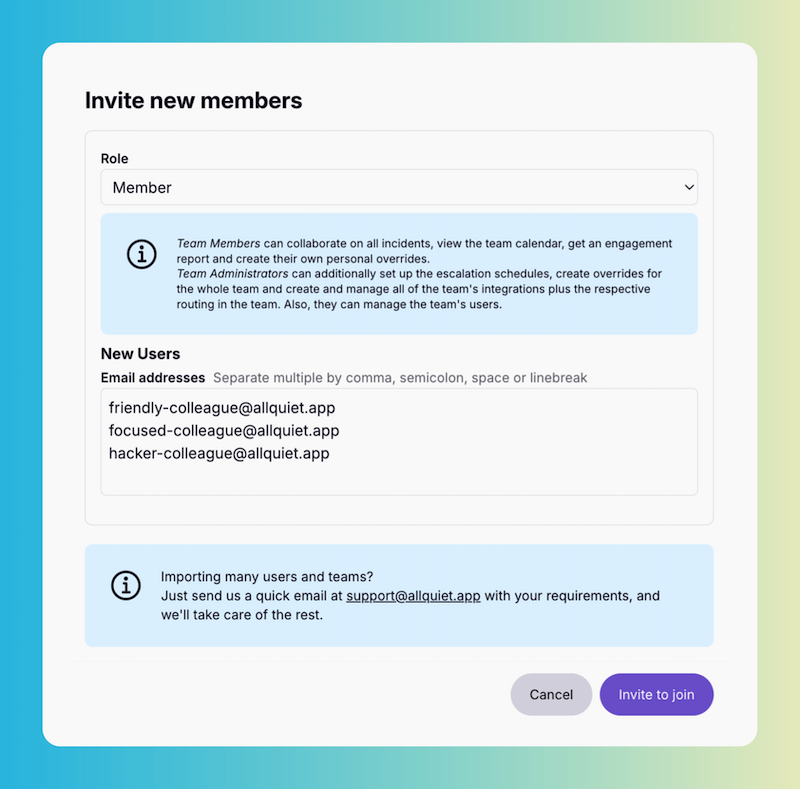
Invite to join. An invitation email will be sent to each with further instructions.
3
Step 3
Invitees receive an email with a link to 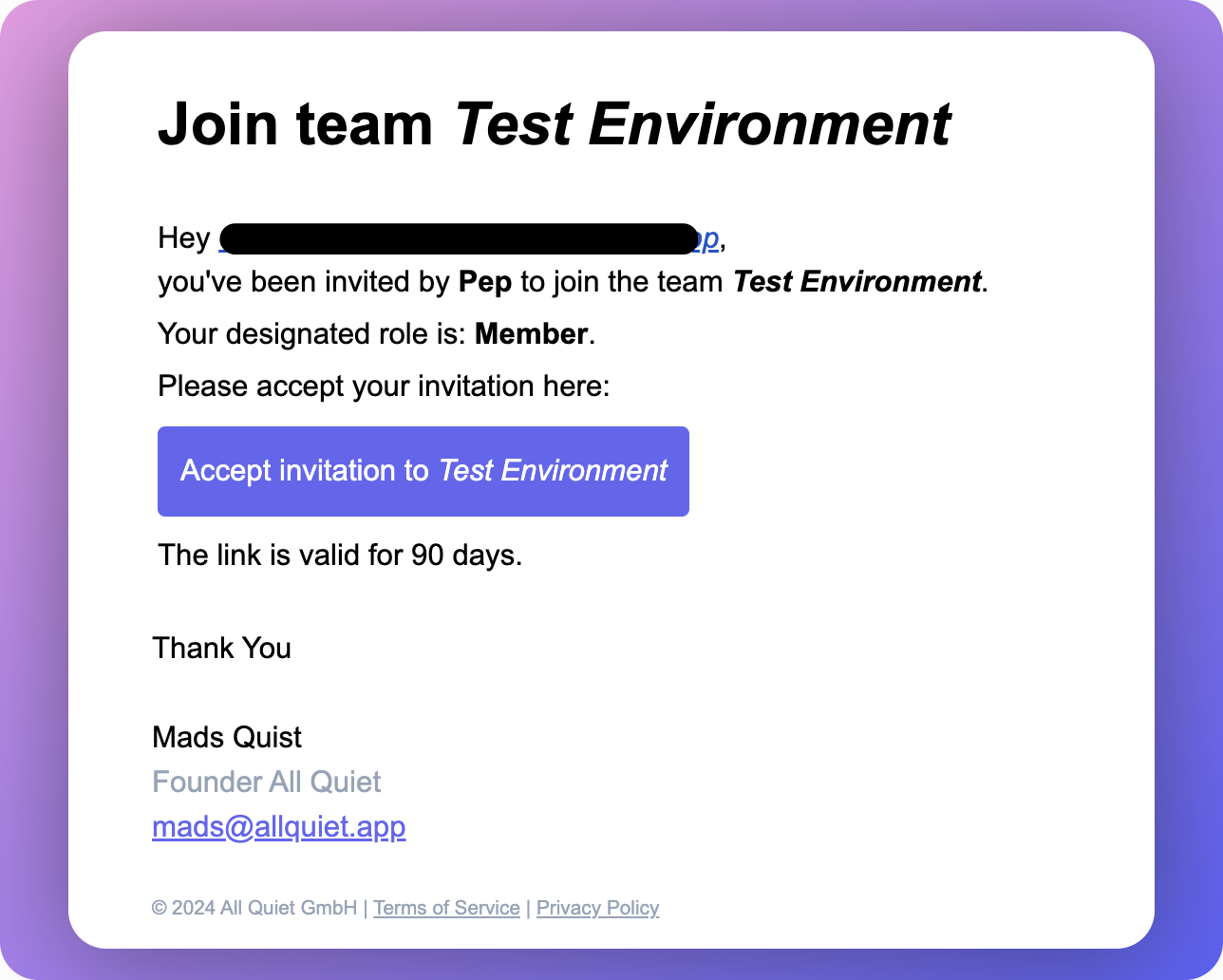
Accept Invitation to [Team Name]. Clicking this confirms their membership and grants access to collaborate.
Schedules & Escalations
- To learn more about team schedules, follow this link.
- To learn more about team escalations, follow this link.
- For more information about escalating an incident to additional teams or reassigning an incident to a different team, follow this link link.
Team Overrides
To learn more about team overrides, follow this link.Maintenance Mode
The maintenance mode feature for teams allows for the management of incident alerts during times of scheduled maintenance or expected downtime. It is accessible through theTeam > Maintenance page in the All Quiet Web App.
You can either
- Create new maintenance override.
- Edit planned maintenance.
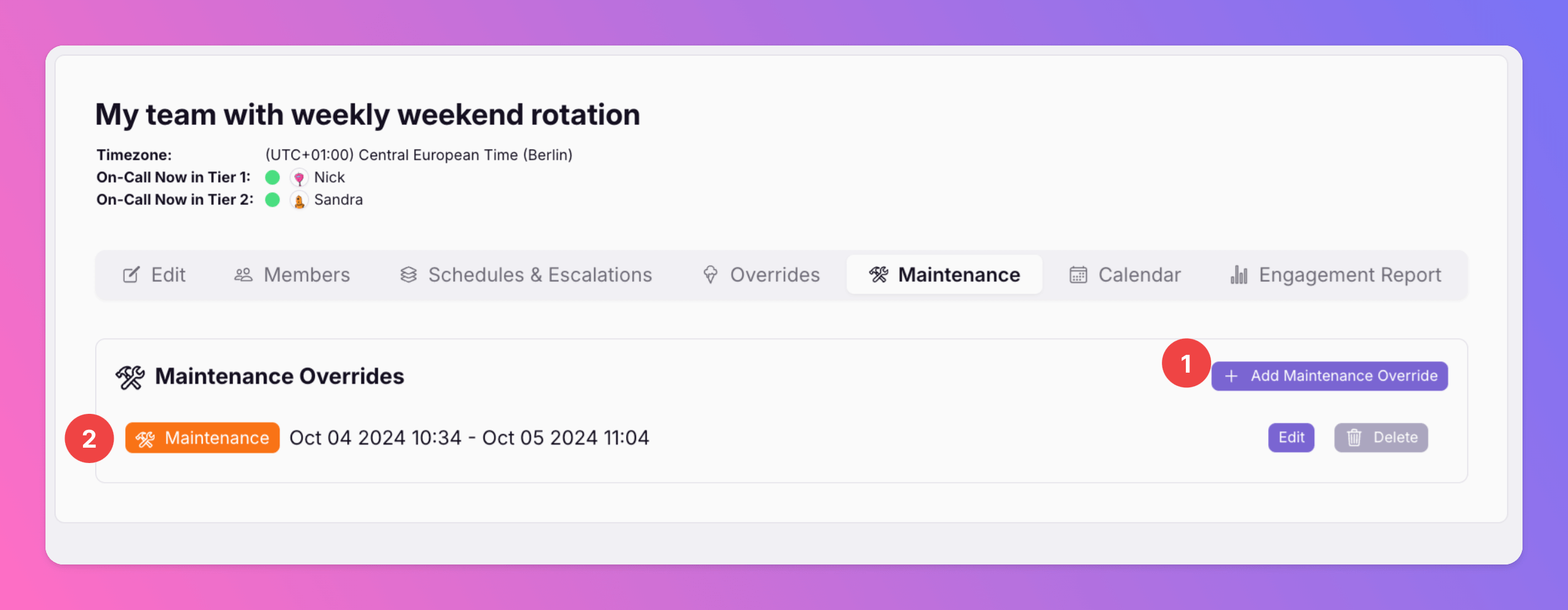
1
Quick Actions
Use these to quickly populate the start and end times with predetermined durations ranging from 30 minutes to 8 hours.
2
Start Date and Time
Specify the start date and time for the maintenance window according to the team’s timezone.
3
End Date and Time
Specify the end date and time to mark the conclusion of the maintenance window.
4
Type
Choose between two types of maintenance modes:
- Maintenance: Selecting this option will prevent the creation of new incidents during the scheduled period.
- Muted: This option allows incidents to be created without sending out any notifications during the period.
5
Create
Clicking the ‘Create’ button will confirm and activate the maintenance schedule. It will also be displayed in the team’s calendar.
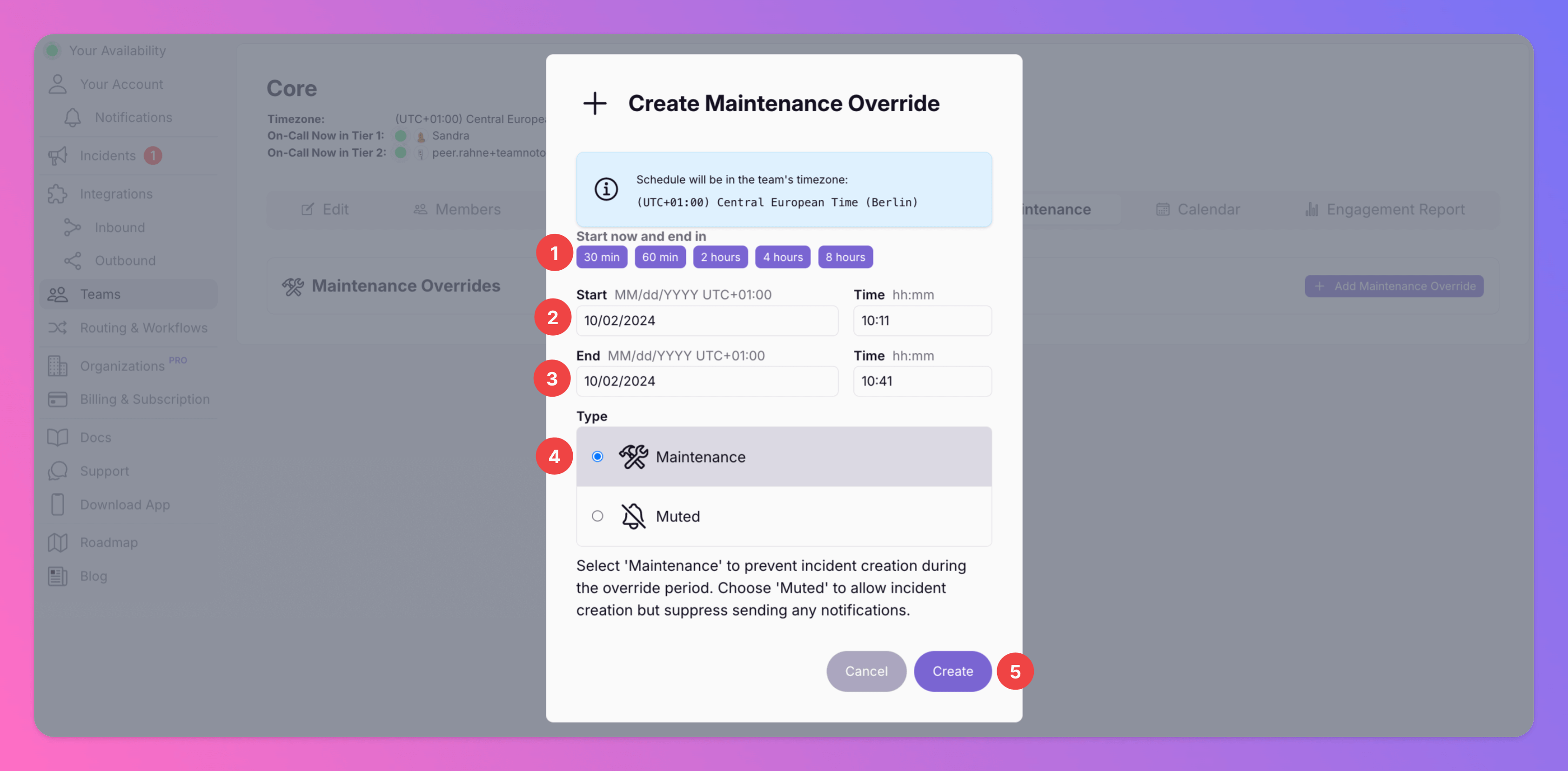
Calendar
To learn more about team calendars, follow this link.Engagement Report
To learn more about the KPI’s in our Engagement Report, following this link.Team Overview
The team overview show all the teams you have a team role in or, if you’re a billable user, that are biiled by you. For users wit organization roles, it also shows teams of your organization that you don’t have an explicit role in. Therefore, filtering this view via team labels or team names can be handy for people with a higher number of teams.